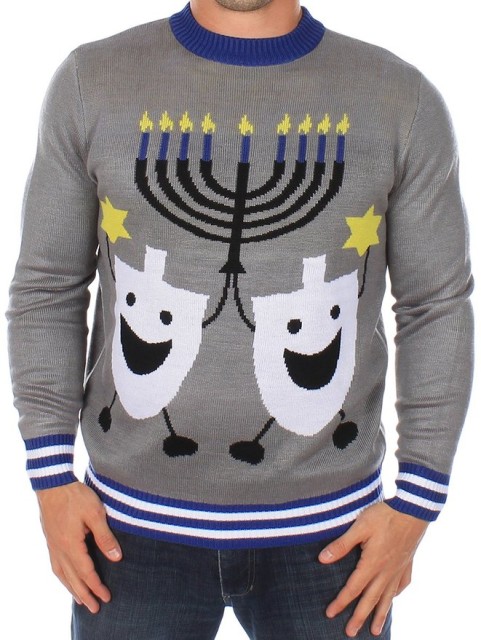So here we are, well into Hannukah, and across the land Jewish parents are racking their brains and clicking on two-day deliveries from Amazon. Too bad that little box in the closet can’t supply enough stuff to last the whole holiday.
You get the joke. After recapturing their desecrated Temple from Syrian King Antiochus in 164 BCE, the Maccabees discovered a cruse with just one day’s worth of consecrated oil, but lo and behold, it kept the Menorah burning for eight full days.
As the Hebrew acronym on the four-sided top (dreidel) we gamble with on the holiday reminds us, “Nes gadol hayah sham”—A Great Miracle Happened There.
The earliest reference to this miracle occurs in the Babylonian Talmud, which was compiled more than 600 years after the Maccabean revolt. The rabbis make it the reason for the length of the holiday celebrating the (re-) dedication, the hanukkah, of the Temple.
Yet the medieval scholar who commented on an ancient holiday calendar called the Megillat Ta’anit was puzzled. After all, Moses took seven days to dedicate the Tabernacle in the desert, and when Solomon built the Temple, he spent seven days dedicating it as well. If there was to be a Hanukkah, shouldn’t it also run for seven days?
The best the scholiast could come up with was that it took the Maccabees the full seven days to clean the Temple up, so the dedication had to be done on the eighth day.
Pretty weak.
Fortunately, we have an alternate explanation. This comes from 2 Maccabees, a work written only 40 years after the rededication took place:
It happened that on the same day on which the sanctuary had been profaned by the foreigners, the purification of the sanctuary took place, that is, on the twenty-fifth day of the same month, which was Chislev. They celebrated it for eight days with rejoicing, in the manner of the festival of booths, remembering how not long before, during the festival of booths, they had been wandering in the mountains and caves like wild animals. Therefore, carrying ivy-wreathed wands and beautiful branches and also fronds of palm, they offered hymns of thanksgiving to him who had given success to the purifying of his own holy place. They decreed by public edict, ratified by vote, that the whole nation of the Jews should observe these days every year. (2 Maccabees 10:5-8)
Simply put, the recapture of the Temple allowed the rebels, who were religious purists, to make up for their inability to celebrate the important pilgrimage festival of Sukkot several months earlier. (Taking its name from the temporary booths in which Jews are supposed to sit and eat, Sukkot lasts for eight days and involves waving a sheaf of palm, myrtle, and willow known as the lulav.) Ergo, Hanukkah is eight days long because it started as a Sukkot simulacrum.
That’s a much more plausible story, but in all likelihood the rabbis were unaware of 2 Maccabees, which was written in Greek and not incorporated into the Hebrew Bible. Moreover, they did not approve of the Maccabean model.
Hadn’t wars against Rome led to the destruction of the Temple, the devastation of Judean Jewry, and the banning of Jews from Jerusalem? Better to keep the focus on God and the miracle of the lights. Not until the Zionist movement of the 20th century would the Maccabees be rehabilitated as Jewish military heroes and given pride of place on Hanukkah.
As for the orgy of Hanukkah gift-giving, consider it the price of assimilation to the dominant religious culture. You might say it’s the cross we American Jews have to bear at this season of the year.
(h/t Ron Kiener)






